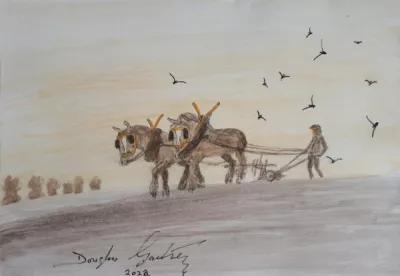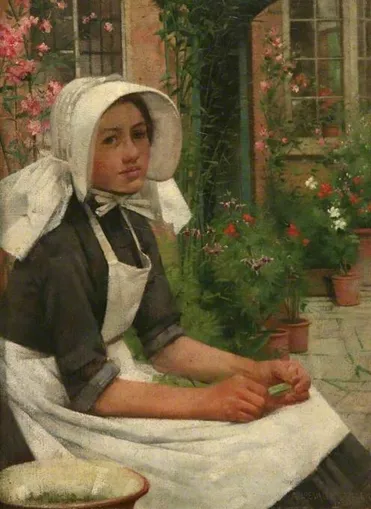Ducks, Green Peas and Potatoes
Guest Blogger – Sue M. Davies, University of Hertfordshire ([email protected])

Our previous blog updates you on John White and his remarkable diaries, and the work we're doing with the University of Hertfordshire in Project HARVEST.
As the HARVEST project progresses, we are finding out every day what a rich source of information the John White Archive is. His diary provides a detailed account of what was happening at Parsonage Farm: for instance, there are frequent entries about the weather, the type of wheat being planted and the price of sheep at Watford Market. But there is far less information about what he and his family ate. Since I am interested in consumption as much as production, I’ve been searching for clues, and on the 13th June 1880 John White had a meal that was worth recording, “ …had ducks, green peas, new potatoes the first from our garden this year. A nice dish of strawberries for dessert afterwards.”
I love his pride in the first new potatoes. It is possible that the peas came from the farmhouse garden too. Six weeks before, on 1st May 1880, John White wrote in his diary, “My earliest peas in the garden are in full bloom...”. Now, to get the peas onto John White’s plate 144 years ago someone would have had to shell them. More than one Victorian artist chose to depict this process, often in a highly romanticised fashion. This painting by the London born Albert Chevallier Tayler (1862-1925) is less idealised than some. The girl’s expression suggests that shelling peas is more of a laborious household task than a bucolic pleasure. Her bonnet is a practical one designed to keep the sun off her face and neck (and we'll have examples in the museum as part of our exhibition later in the year).

John White’s diary does not record where the ducks came from. We know that chickens were kept at Parsonage Farm. There is a reference and the census records from 1861 and 1871 show that Ann Harrison, “poultry woman”, was living at the farm. Perhaps, like many country households at the time, they also kept ducks. As well as their eggs and meat, the feathers of poultry birds were used in household bedding.
If you want to recreate the meal, Alexis Soyer gives the following recipe in his 1850 book The Modern Housewife.
Stewed Duck and Peas.
Procure a duck trussed with the legs turned inside, which put into a stewpan with two ounces of butter and a quarter of a pound of streaked bacon let remain over a fire, stirring occasionally until lightly browned, when add a tablespoonful of flour (mix well) and a quart of broth or water, stir round gently until boiling, when skim, and add twenty button onions, a bunch of parsley, with a bay leaf, and two cloves, let simmer a quarter of an hour, then add a quart of nice young peas, let simmer until done, which will take about half an hour longer, take out the duck, place it upon your dish (taking away the string it was trussed with), take out the parsley and bay-leaf, season the peas with a little pepper, salt, and sugar, skim the fat, reduce a little if not sufficiently thick, pour over the duck and serve.
The text of the whole book is available online here - http://www.foodsofengland.co.uk/book1850soyer.htm